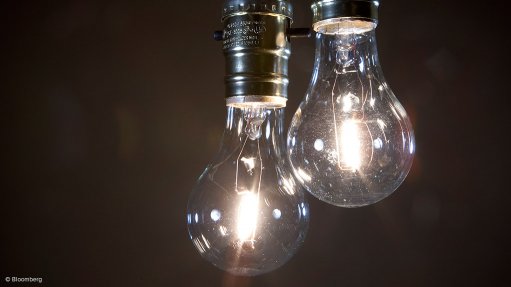
Photo by: Bloomberg
Eskom took credit for accelerating the number of households connected to the electricity supply, after Stats SA revealed on Thursday that levels increased “consistently from 77.1% in 2002 to 85.5% in 2015”.
This as Stats SA also revealed that electricity generation increased by a relatively small 0.8% year-on-year in April 2016.
“The latest household survey results bear testament to the hard work that Eskom and municipalities, through the support of the Department of Energy (DoE), have put in making sure that we accelerate government’s stated objective of achieving universal access to electricity by 2025,” Eskom spokesperson Khulu Phasiwe told Fin24.
“Together with municipalities and the DoE, Eskom will spend R17.6bn over the next three years to connect 840 000 households to the grid.
“An additional 70 000 households will be connected through non-grid solar electrification programmes countrywide.”
Stats SA said the percentage of households that used electricity for cooking increased from 58% in 2002 to 78.1% in 2015.
It said the use of electricity as a source of energy for cooking was highest in Free State (86.9%), Northern Cape (85.9%) and Western Cape (85.4%) and lowest in more rural provinces such as Limpopo (60.1%), Eastern Cape (73.1%) and Mpumalanga (74.2%), where alternative fuels such as wood are, perhaps, more accessible and affordable.
Eskom and government increased the proportion of households with access to electricity from 44% to 85% over the past 20 years, Eskom explained.
“This is no mean feat because, each day, our work is about enabling more South Africans to have access to electricity, so that they can achieve a level of progress in their lives and in their lifetimes that previous generations of South Africans could only have dreamt of.
“To achieve universal access to electricity for all her citizens, South Africa will need to invest more in power generation infrastructure.
“To ensure that universal access is achieved by 2025/26, the DoE has developed the first draft of the electrification master plan to ensure better co-operation between the different implementing entities, as well as different technologies, grid and non-grid rollout in un-serviced areas.”
Stats SA also revealed on Thursday that electricity generation increased by 0.8% year-on-year in April 2016. This followed month-on-month changes of -1.8% in March 2016 and 1.1% in February 2016. Seasonally adjusted electricity generation decreased by 0.5% in the three months ended April 2016 compared with the previous three months.
Government is hoping to build 9.6 GW of nuclear power by 2030 to address power supply issues, but concerns are mounting over how it will be financed and how it will address legal issues regarding the transparency of the process.
The renewable energy programme in the meantime is moving forward with full gusto, which forms part of the National Development Plan (NDP).
The NDP requires “the development of 10 000 MW of additional electricity generation capacity by 2020, against the 2013 baseline of 44 000 MW”, the DoE explained in an EE Publishers overview.
“The integrated resource plan 2010 (IRP 2010) identified the energy sources mix required over a 20 year planning horizon to 2030, of which 17 800 MW should be met from renewable energy by 2030, with 5 000 MW to be operational by 2019 and a further 2 000 MW by 2020.”
The renewable energy independent power producer procurement programme is on course to procure 6 925 MW of renewable energy by 2020 from onshore wind (3 500 MW), CSP (600 MW), solar PV (2 700 MW) and small hydro, biomass, biogas and landfill gas (combined 125 MW).